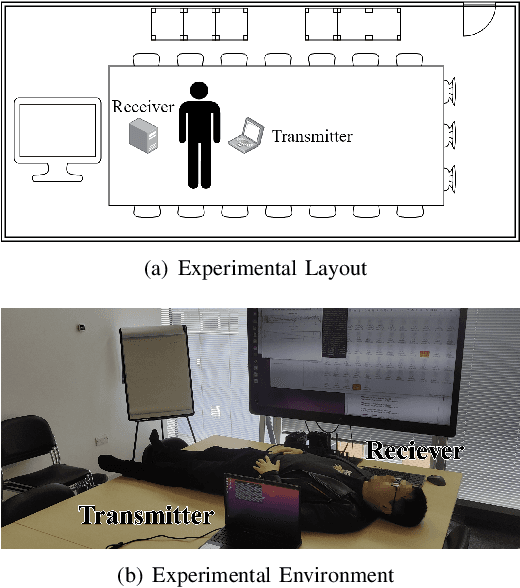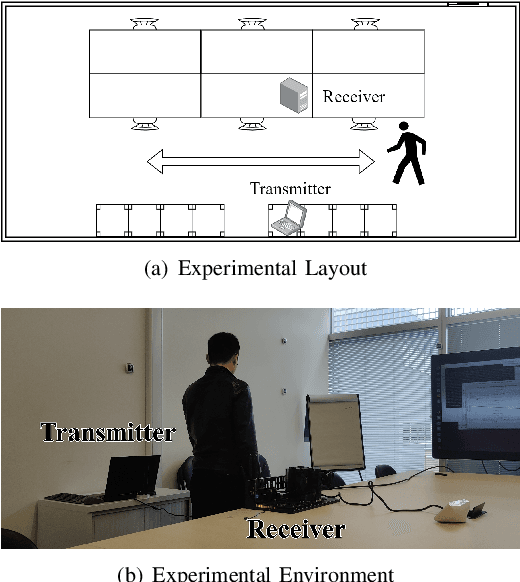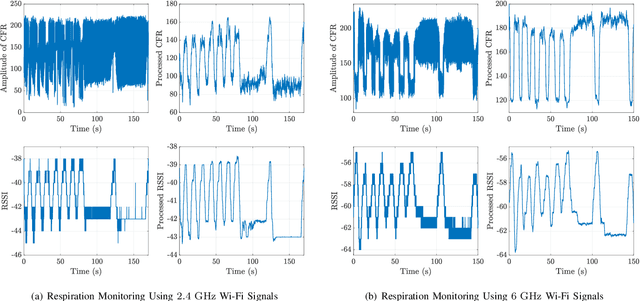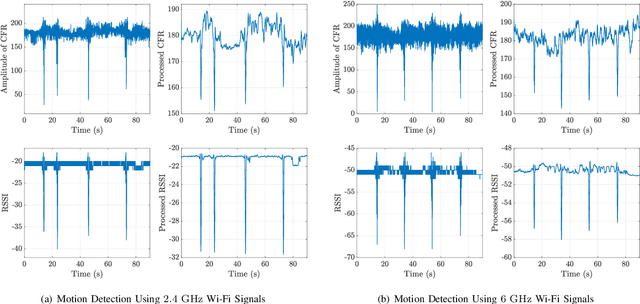Wi-Fi Beyond Communications: Experimental Evaluation of Respiration Monitoring and Motion Detection Using COTS Devices
Paper and Code
Jul 06, 2024



Wi-Fi sensing has become an attractive option for non-invasive monitoring of human activities and vital signs. This paper explores the feasibility of using state-of-the-art commercial off-the-shelf (COTS) devices for Wi-Fi sensing applications, particularly respiration monitoring and motion detection. We utilize the Intel AX210 network interface card (NIC) to transmit Wi-Fi signals in both 2.4 GHz and 6 GHz frequency bands. Our experiments rely on channel frequency response (CFR) and received signal strength indicator (RSSI) data, which are processed using a moving average algorithm to extract human behavior patterns. The experimental results demonstrate the effectiveness of our approach in capturing and representing human respiration and motion patterns. Furthermore, we compare the performance of Wi-Fi sensing across different frequency bands, highlighting the advantages of using higher frequencies for improved sensitivity and clarity. Our findings showcase the practicality of using COTS devices for Wi-Fi sensing and lay the groundwork for the development of non-invasive, contactless sensing systems. These systems have potential applications in various fields, including healthcare, smart homes, and Metaverse.
 Add to Chrome
Add to Chrome Add to Firefox
Add to Firefox Add to Edge
Add to Edge